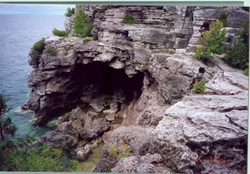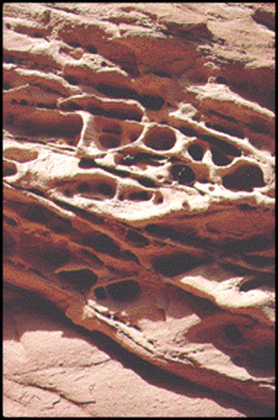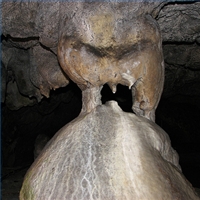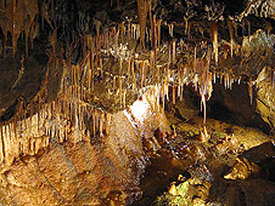Chemical Weathering

Chemical Weathering is the alteration of a rock's internal structure by removing and/or adding elements which produce new minerals. Chemical weathering occurs faster in warm, wet climates. Most rocks at Earth's surfact are not chemically stable, and are constantly going through the process known as weathering. Weathering is a process that involves mechanical disintegration which is physical weathering, and chemical decomposition, which is chemical weathering. This is the first step to forming soil. It breaks down the primary minerals in a rock into new secondary minerals that are more stable in surface environments. Sometimes plants can cause chemical weathering, and dissolve rocks. This is caused by plant acids, that eat away at the surface of the rock and breaking it's minerals down, to form more simpler compounds. Many rocks have been shaped by chemical weathering.
Sometimes they can form caves like the limestone cave above. This cave was formed basically out of precipitation. Limestone rock is dissolved over many years and seps into the ground and into the cavern, or Limestone cave, and it slowly builds up over many many years. All of these rocks have been chemically weathered by one force or another and are now formed to look like this.



